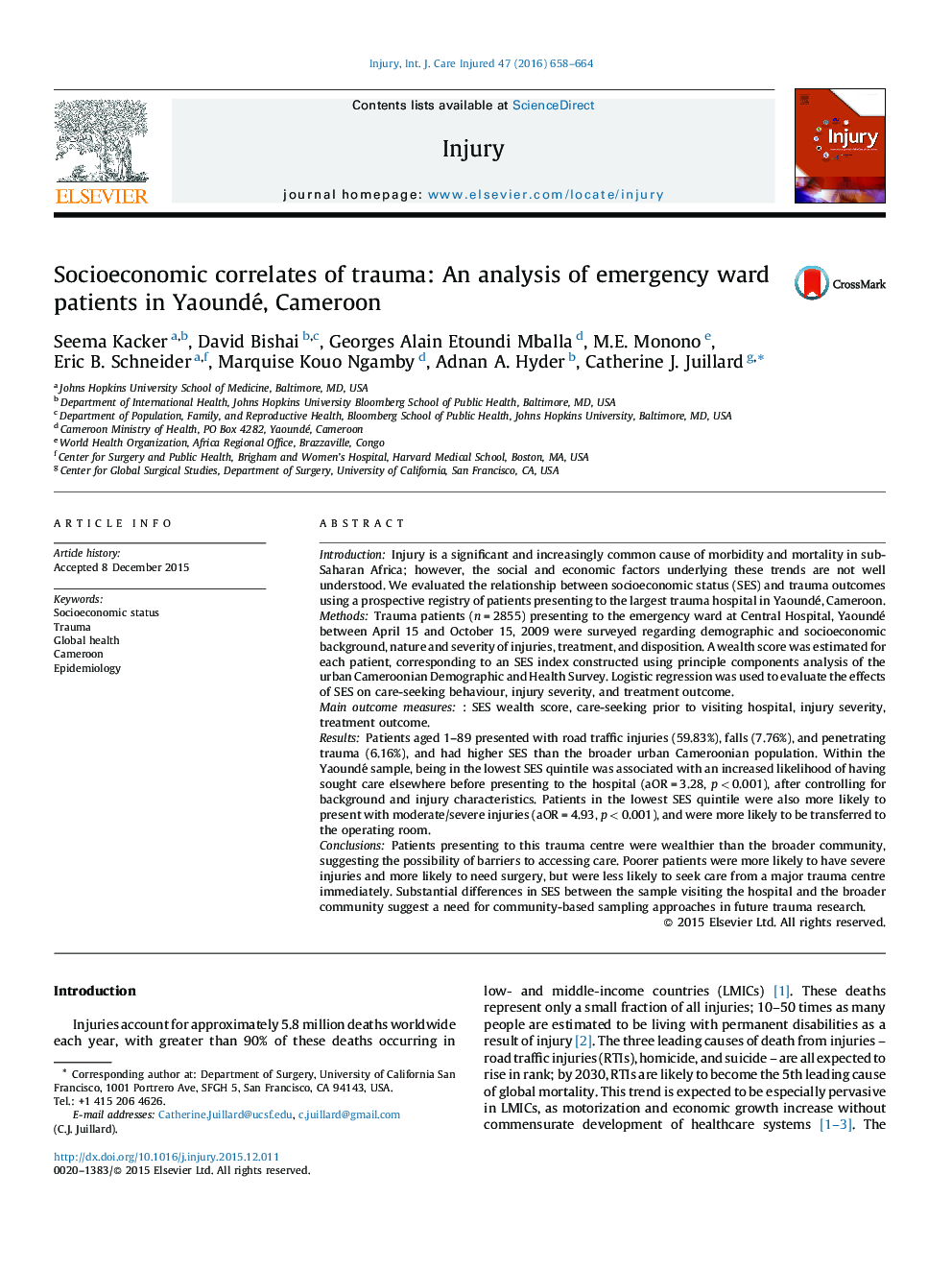| کد مقاله | کد نشریه | سال انتشار | مقاله انگلیسی | نسخه تمام متن |
|---|---|---|---|---|
| 3238695 | 1205973 | 2016 | 7 صفحه PDF | دانلود رایگان |
IntroductionInjury is a significant and increasingly common cause of morbidity and mortality in sub-Saharan Africa; however, the social and economic factors underlying these trends are not well understood. We evaluated the relationship between socioeconomic status (SES) and trauma outcomes using a prospective registry of patients presenting to the largest trauma hospital in Yaoundé, Cameroon.MethodsTrauma patients (n = 2855) presenting to the emergency ward at Central Hospital, Yaoundé between April 15 and October 15, 2009 were surveyed regarding demographic and socioeconomic background, nature and severity of injuries, treatment, and disposition. A wealth score was estimated for each patient, corresponding to an SES index constructed using principle components analysis of the urban Cameroonian Demographic and Health Survey. Logistic regression was used to evaluate the effects of SES on care-seeking behaviour, injury severity, and treatment outcome.Main outcome measures: SES wealth score, care-seeking prior to visiting hospital, injury severity, treatment outcome.ResultsPatients aged 1–89 presented with road traffic injuries (59.83%), falls (7.76%), and penetrating trauma (6.16%), and had higher SES than the broader urban Cameroonian population. Within the Yaoundé sample, being in the lowest SES quintile was associated with an increased likelihood of having sought care elsewhere before presenting to the hospital (aOR = 3.28, p < 0.001), after controlling for background and injury characteristics. Patients in the lowest SES quintile were also more likely to present with moderate/severe injuries (aOR = 4.93, p < 0.001), and were more likely to be transferred to the operating room.ConclusionsPatients presenting to this trauma centre were wealthier than the broader community, suggesting the possibility of barriers to accessing care. Poorer patients were more likely to have severe injuries and more likely to need surgery, but were less likely to seek care from a major trauma centre immediately. Substantial differences in SES between the sample visiting the hospital and the broader community suggest a need for community-based sampling approaches in future trauma research.
Journal: Injury - Volume 47, Issue 3, March 2016, Pages 658–664
